French Drinks: Basic Overview
Common Ingredients
Common Preparing Methods
Key Taste
Drinking Etiquette
Culinary Festivals
Influence and Fusion
Types of French Drinks
-
Alcoholic
French alcoholic beverages encompass a range of spirits, wines, and liqueurs, celebrated for their regional specificity and deep-rooted traditions in fermentation and distillation.
-
Non-Alcoholic
Non-alcoholic French beverages include artisanal mineral waters, syrups, and traditional café drinks, offering a taste of France’s culinary heritage without the alcohol.
French beverages have a long history of winemaking heritage, celebrated for their diversity and quality. Iconic wines from regions like Bordeaux and Champagne highlight the importance of terroir, defining the unique flavors and characteristics of each variety.
Spirits such as cognac and armagnac showcase France’s expertise in distillation and aging, contributing to the nation’s prestigious beverage reputation.
Aside from alcoholic offerings, France is known for its mineral waters and artisanal lemonades. These beverages, integral to French social customs and dining, play a significant role in daily life and special occasions.
The quality and authenticity of French beverages are safeguarded by stringent regulations, including the appellation d’origine contrôlée (AOC) system, which dictates production methods and ingredient sourcing.
Remember to uncover more about French drinks by learning about the perfect food options to enjoy with these thirst-quenching beverages.
30 Most Popular French Beverages with Filters
The French are as enthusiastic about French drinks as they are about their cuisine, language, art, and history. Their wine culture is genuinely awe-inspiring, but many other classic liqueurs and cocktails are waiting to be explored.
For that, you may be interested in discovering these drinks in a more organized manner according to their alphabet, key ingredients, flavors, preparing techniques, drink varieties, and global distribution.
To add to that, make sure to utilize the helpful filter system to learn more about the national, traditional, and even fusion drink options of France:
Calvados
- Alcoholic
- Traditional
Calvados, often nicknamed calva, is an appellation-controlled apple brandy from the Normandy area in Northwest France. Historically, this area has been linked with apples and apple cider.
The fermented juice of apples (sometimes with pears) is often double-distilled as a base for calvados. After aging for 2 years in oak casks, it is ready to be served.
Calvados is separated into three sub-regions with slight differences in the distillation method, base ingredient, and terroir. Locals prefer drinking calvados before or after dinner, with some even pairing it with different sweet treats.
Suze
- Alcoholic
- Traditional
Suze is a refreshingly bitter French apéritif made from gentian root, a popular bitter agent in cocktails that grows in the Swiss and French Alps. This drink first made its appearance under the name Picotin in 1889, boasting a yellow color and an ABV of 15%.
In 1898, the name was changed to suze, which might be tied to the creator’s sister-in-law Susanne Jaspert or the Suze River in Switzerland (where the creator purchased the recipe).
This gentian-based booze works well in cocktails. However, the locals also love to enjoy a glass of suze without any mixed drinks before or after dinner.
Byrrh
- Alcoholic
- Traditional
Byrrh is a French fruity aromatized apéritif featuring a port-like wine and mistelle base with natural quinine. First introduced in 1866 and became a trademark in 1873, byrrh sold successfully in the early 20th century thanks to its marketing and reputation as a “hygienic drink”.
Nowadays, this drink is still widely enjoyed, typically on the rocks with an orange twist or a dash of soda.
Kir
- Alcoholic
- Traditional
Kir is a popular French drink prepared with blackcurrant liqueur (often crème de cassis) and white wine. It is usually served as an apéritif before a meal or snack in France.
Named after Felix Kir, a mayor of Dijon in Burgundy, the drink was popularized by him after World War II as part of the twinning movement. Back in the day, the locals used to call it blanc-cassis.
Kir is traditionally served in a flute glass with white wines. However, if you substitute champagne for white wine, it will become kir royale, a popular and modern French cocktail.
Pastis
- Alcoholic
- Traditional
Pastis is a liquor combination of herbs and spices in France, including licorice, cinnamon, and pepper, as well as the potently sweet star anise. Locals usually dilute pastis with water (1:5 ratio), with some even having it with ice.
This unique beverage came from the Provençal word pastisson, meaning mixture. Sometimes, the French will call it nicknames like Pastaga or La Jaune (yellow).
Pastis was created 17 years after the Absinthe ban when the French public was wary of high-proof anise cocktails. Nowadays, pastis is not only the country’s favorite apéritif, but it’s also a significant element in several classic French dishes.
Lillet
- Alcoholic
- Traditional
Lillet is a classic fortified wine that brings together a mixture of fruits, peels, and barks in neutral alcohol and combines it with wine. Then, they will put the final blend in oak barrels and allow it to mature for a couple of months.
Tastes best when chilled, most bartenders will serve it with ice and an orange slice or lemon peel. Created in 1872 by the Lillet brothers, the drink was first advertised as kina lillet.
Dubonnet
- Alcoholic
- Traditional
Dubonnet is a French quinine-based apéritif created by Sir Joseph Dubonnet in 1846. To make the signature wine, fortified red wine is mixed with a blend of herbs and spices.
Surprisingly, dubonnet is even Queen Elizabeth II’s favorite cocktail! Apparently, the Queen of England loves to drink Dubonnet with gin.
In France, locals prefer mixing it with carbonated drinks such as sparkling wine or club soda.
Absinthe
- Alcoholic
- Traditional
Absinthe is a French and Swiss liquor with a vibrant and transparent green color. The alcohol is made of a simple maceration of anise, fennel, wormwood, and other medicinal and culinary herbs in alcohol.
Flavor-wise, absinthe is rather strong and intoxicating; thus needing to be diluted for serving. This anise-flavored spirit originated in Switzerland around the late 18th century and became famous as an alcoholic beverage in France in the late 19th and early 20th.
French 75
- Alcoholic
- Traditional
French 75 is a signature French cocktail that was invented in 1915 in Paris by a bartender from Harry’s New York. However, at the time, it wasn’t prepared with Champagne.
The number 75 in this drink’s name commemorates the First World War French cannon (the Canon de 75 modèle 1897). The drink itself was described to be as powerful as the legendary cannon.
People started mixing French 75 with champagne about ten years later, and then this drink was renamed and became a worldwide phenomenon. Until this day, it is still one of the go-to beverages of the French, especially during weddings, holidays, or brunches.
Ti Punch
- Alcoholic
- Traditional
Ti punch, translated to “small punch”, is a rum-based beverage from Martinique and Guadeloupe in the French Caribbean. This drink contains lime, cane syrup, and rhum agricole (a unique rum made of sugar cane juice instead of molasses).
According to Martinique tradition, the bartender will give customers the glassware, rum, syrups, and lime to make the drink based on their preference. Interestingly, this refreshing apéritif usually comes with no ice.
Ratafia
- Alcoholic
- Traditional
Ratafia is a fortified French beverage known as l’apéritif du vigneron, or “apéritif of the winemaker”.
With another name, ratafia de champagne, it is made from a blend of marc (grappa) and the grape’s unfermented juice. Thus, the beverage is traditionally created around harvest time to acquire fresh grape juice.
This wine is mainly found in wine regions like Champagne, Burgundy, and the Bordeaux region. Ratafia tastes best when served cold with no ice, ideally paired with cheese and crackers.
Ricard
- Alcoholic
- Traditional
Ricard is an apéritif in France that tastes best when served cold and diluted with cold water, resulting in a somewhat opaque drink with a pronounced fresh anise and licorice flavor.
The alcohol requires diluting with chilled water at a level of 1:6 ratio. Once diluted, you can add ice cubes to release the full aroma of the anise.
Champagne
- Alcoholic
- National
Champagne is a sparkling wine exclusively produced in the Champagne area of France. This drink is prepared using a classic mix of chardonnay, pinot meunier, and pinot noir, all of which are native to the Champagne area.
However, people also add small amounts of authorized grape types in the Champagne AOP like Pinot Blanc, Pinot Gris, Arbane, and Petit Meslier.
Around the 17th, 18th, and 19th centuries, Champagne successfully became synonymous with the monarchy.
Champagne production grew exponentially in the 19th century, from 300,000 bottles per year in 1800 to 20 million bottles in 1850.
Mimosa
- Alcoholic
- Fusion
Mimosa is a French cocktail that calls for champagne or dry sparkling wine and freshly squeezed orange juice. Locals sometimes use grand marnier or bitters to give the drink more depth.
Although this drink is named after a yellow-flowered mimosa plant (Acacia Dealbata), it doesn’t include any flowers.
Outside of France, the cocktail is particularly loved in the USA. Besides America, this drink also has a long history in Spain, particularly in the East, where oranges and sparkling wines are famous.
Cognac
- Alcoholic
- Traditional
Cognac is a traditional French brandy made by distilling grapes into eau-de-vie, which is subsequently aged and combined.
When people discovered that Charente eau-de-vie brandy aged in wood casks had distinct and more subtle tastes, Cognac was created and soon became a famous sought-after drink. Surprisingly, this alcoholic drink is particularly enjoyed among the British nobility.
Authentic Cognac must be manufactured in copper pot stills and matured in French oak for at least two years. If the drink is not produced in the cognac AOC region and follows tight production processes, it is not real cognac!
Armagnac
- Alcoholic
- Traditional
Armagnac is a liquor coming from Gascony, France, which is now the provinces of Nouvelle-Aquitaine and Occitanie. Although it was primarily employed as a stomach treatment in the 15th century, armagnac is considered one of the earliest grape brandy kinds made in France.
This drink can be made with ten different grapes, with ugni blanc being the predominant one. The grape blend is distilled once using column stills and aged in oak barrels for at least two years before release.
The flavor of this distinctive brandy varies depending on its maturation; young ones taste like vanilla and honey, while matured ones have roasted nuts, licorice, and tobacco flavors.
Grand Marnier
- Alcoholic
- Traditional
Grand Marnier, or Grand Marnier cordon rouge, is a cognac-based bitter orange liqueur created in 1880 by Alexandre Marnier-Lapostolle.
There are many ways to enjoy this delightful drink, either pouring it straight or mixing it in a cocktail. Grand Marnier is also one of the critical components in suzette crêpes, soufflé, crème brûlée, bûche de noël or sauces for savory dishes.
Chartreuse
- Alcoholic
- Traditional
Chartreuse is an herbal liqueur in France, being one of the oldest and most well-known drinks. This herbal mix comes in green and yellow varieties with different flavors and alcohol concentrations, usually served cold as an after-dinner drink.
The Carthusian Monks have been making this liqueur since 1737, following the manuscript by François Annibal d’Estrées in 1605. Chartreuse got its name from the monks’ Grande Chartreuse monastery, located in the Chartreuse Mountains in the Grenoble area.
This herbal drink contains 130 herbs, spices, roots, and barks. These ingredients will be mixed with distilled alcohol and aged in oak barrels, even used as a form of medication in the past.
Hennessy
- Alcoholic
- Traditional
Hennessy is a liquor product coming from the Cognac commune, a French cognac distiller called Hennessy.
Hennessy products can only be made from locally grown ugni blanc grapes, distilled twice after fermentation to produce a refined eau-de-vie. Then the alcohol will be aged in oak barrels until it satisfies the quality requirements.
Chambord
- Alcoholic
- Traditional
Chambord is a low-alcohol French liqueur made from cognac, berries, Madagascar vanilla, and Moroccan citrus peel.
Unlike other well-known French spirits and alcoholic beverages, chambord was inspired by a raspberry liqueur enjoyed by French royalty in the late 1600s.
This raspberry drink has an attractive zesty taste that many people enjoy. Its spherical bottle with a metallic gold plastic belt design also sets it apart from other local liquors.
This drink is commonly used as a spritzer topping in several cocktails using chambord, such as daiquiri, manhattan, and margarita. It pairs amazingly well with champagne as well.
Cider
- Alcoholic
- Traditional
Cider is a fermented beverage made from apples that is widely popular in northern France, particularly in Normandy.
The locals usually pair cider with crêpe, fruit galettes, meat, and seafood dishes.
French cider is recognizable through its medium yellow to amber color, providing a bittersweet and bitter sharp profile. In terms of alcohol content, French cider comes in at around 3 to 6%.
Vin Chaud
- Alcoholic
- Traditional
Vin Chaud, or “hot wine” is a combination of red wine, cinnamon, honey, and orange to produce a festive drink on Christmas.
Ideally not too sweet, the hot wine is prepared in huge vats of white or red vin chaud at the marketplaces. People even sometimes add star anise, cinnamon, citrus, or a slice of orange.
Chablis
- Alcoholic
- Traditional
Chablis is a white wine that is also widely known as the northernmost wine district of France’s Burgundy region. The locals use only chardonnay grapes to make this wine.
However, unlike other chardonnay white wines, chablis rarely use oak barrels for the aging process. Because of this, chablis has a distinct flavor profile and style, boasting a flint-like minerality and intense acidity.
Chambertin
- Alcoholic
- Traditional
Chambertin is a Grand Cru vineyard and appellation in Burgundy, specifically in the Côte de Nuits wine region. This wine usually has rich red and black fruit scents with notes of smoky licorice, delicate herbs, and flowers.
Its unique, robust flavor perfectly complements chicken-based dishes, as well as beef or lamb-based dishes with rich wine-infused sauces.
Diabolo Menthe
- Non-Alcoholic
- Traditional
Diabolo, especially the mint-flavored type, is one of the most well-known and well-loved French cocktails. This summer drink is served in cafés and restaurants throughout France, offering a variety of flavors besides mint (or menthe).
The most popular alternatives are strawberry, lemon, or grenadine, but nothing can compare to the original green minty drink.
Made from a simple mixture of lemonade and syrup, this diabolo drink made its first appearance before 1920, gradually becoming a favorite refreshment for every child in France.
Perrier
- Non-Alcoholic
- Traditional
Perrier is a French sparkling water known for its distinctive green bottle and carbonation. Often, all of the bottles are in a droplet shape, which makes them instantly recognizable.
Perrier natural bottled mineral water was obtained from springs in Vergèze, France. The water is then filtered and combined with natural carbon dioxide gas.
Commonly, you can drink perrier straight from the bottle. But to spice things up, try pouring it into a glass with mint syrup and garnishing it with a slice of lemon.
Gini Lemon
- Non-Alcoholic
- Traditional
Gini lemon is a soft drink in France in the form of a soda created in 1971 by Perrier, the sparkling water brand. The sweet drink is great by itself, but it also tastes good in a cocktail or mojito.
Interestingly, this non-alcoholic sparkling soda is mainly known for its flirtatious and “sexual” commercials.
Orangina
- Non-Alcoholic
- Traditional
Orangina is a carbonated drink in France, having a slightly orange juice with a tinge of lemon and grapefruit flavor that comes in an orange-shaped bottle.
Because of its fun bottle shape and delicious flavor, orangina is very popular among children (and adults). Some bartenders even pair it with spirits or use it in a cocktail.
Café Au Lait
- Non-Alcoholic
- Traditional
Café au lait, meaning “coffee with milk” in French, is a traditional French breakfast drink made with French press coffee and warmed milk. The proportions of the components vary depending on the drinkers’ preference.
Aside from coffee, café au lait also comes with a version of dark coffee and heated milk.
Hot Chocolate
- Non-Alcoholic
- Traditional
Hot chocolate is a drink made using melted chocolate, often served in a mug of hot chocolate with marshmallows.
Many French café serve this warm drink at breakfast time with sliced bread so you can dunk it into the hot chocolate. Furthermore, hot chocolate is even a favorite breakfast choice for many French locals.
What French Beverages to Pair with Dishes?
Pairing French beverages with dishes enhances the dining experience, highlighting the flavors of both the food and the drink. Here are some classic pairings:
These refreshments are ideal for pairing with fine French specialties to give you the fullest and fanciest meal experience.
Do you find these French beverages suit your taste buds? If so, share these drinks with others and leave a comment to discuss France’s fabulous refreshments.


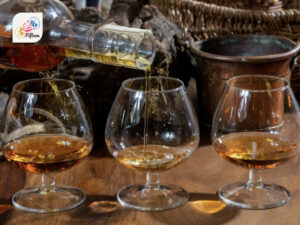
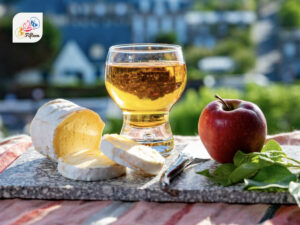
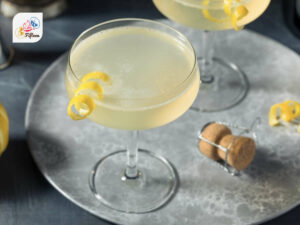
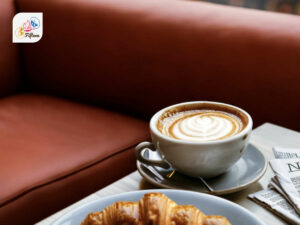

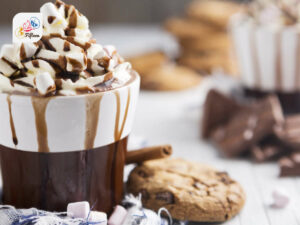
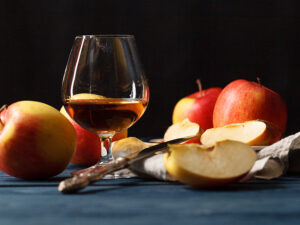
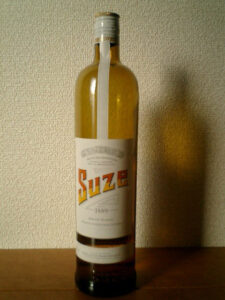
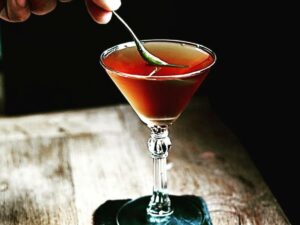
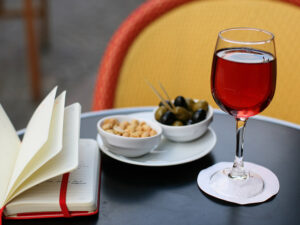
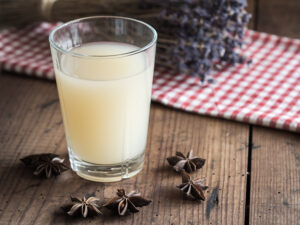
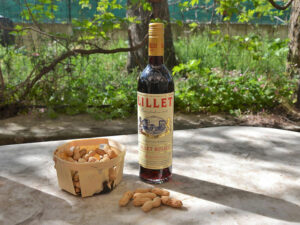
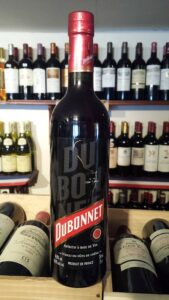
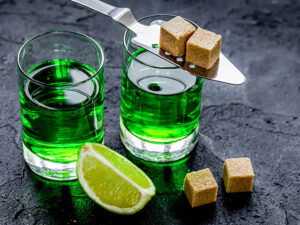
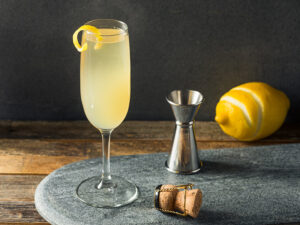
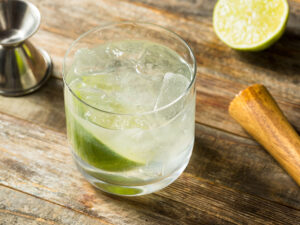
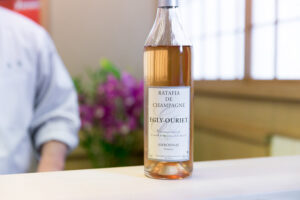
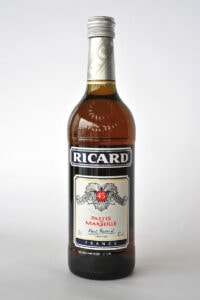
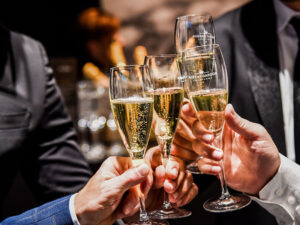
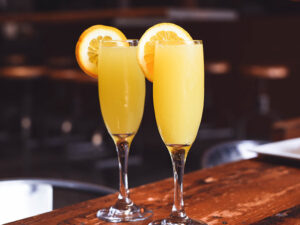
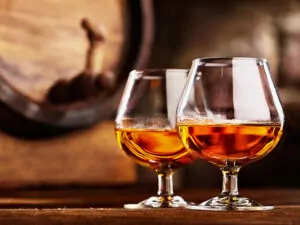
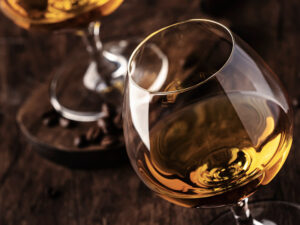
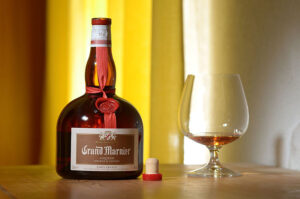
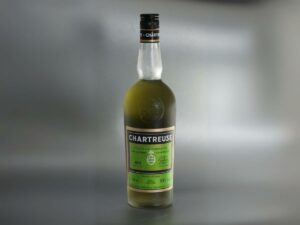
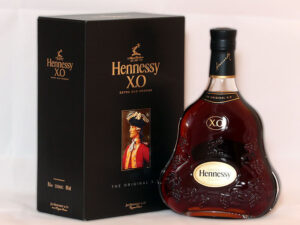
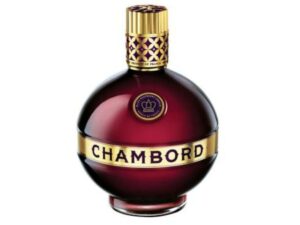
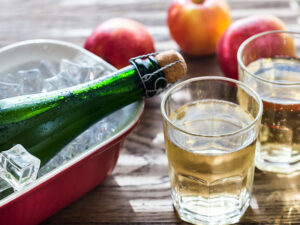

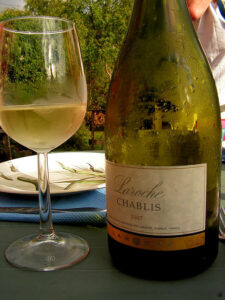
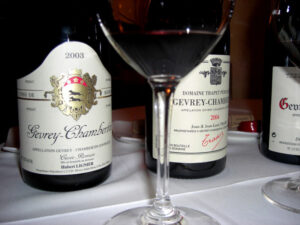
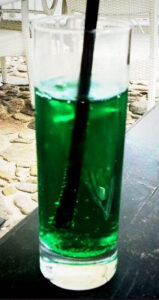
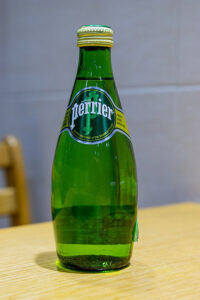
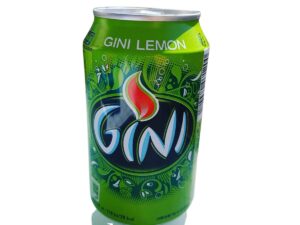
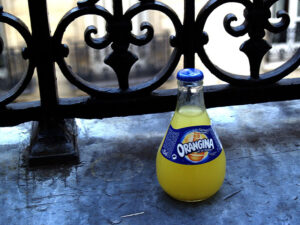
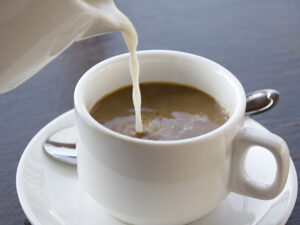
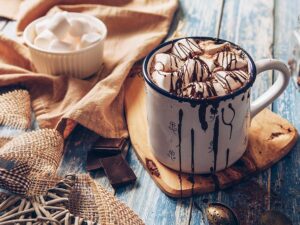
Jamie Scott
Editor in Chief, Senior Content Writer
Expertise
Home Cooking, Meal Planning, Recipe Development, Baking and Pastry, Food Editor, Cooking-video Maker, Western Food Evaluation Expert
Education
Le Cordon Bleu College of Culinary Arts
Local Community College, New York, NY
Jamie Scott is a skilled culinary expert and content creator specializing in Western cuisine. With over 15 years in the culinary field and formal training from Le Cordon Bleu, Paris, Jamie deeply understands how to blend nutrition with delicious flavors. His passion for cooking matches his commitment to making healthy eating accessible and enjoyable.
On Fifteen.net, Jamie brings a fresh perspective to classic dishes and beverages, offering readers insightful recipes, cooking tips, and a fresh view on meal planning that emphasizes taste, health, and simplicity.